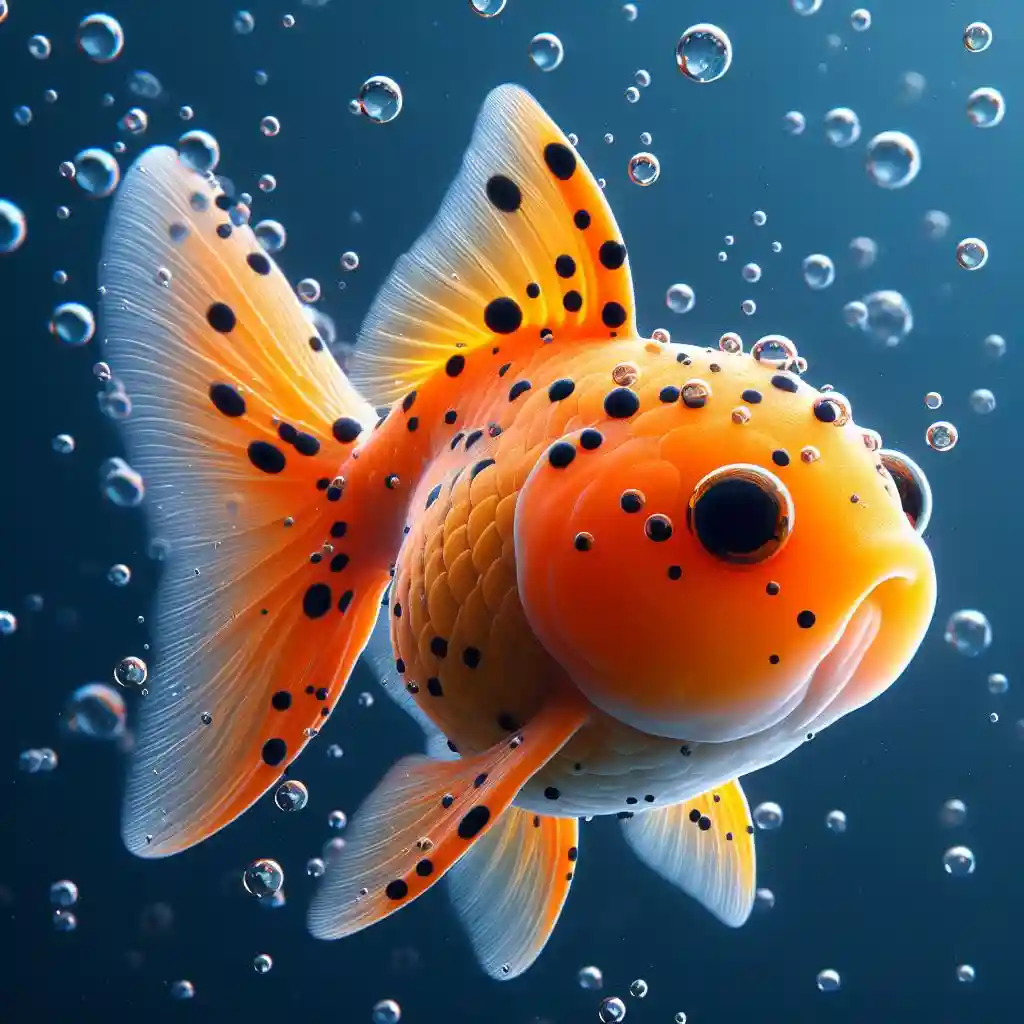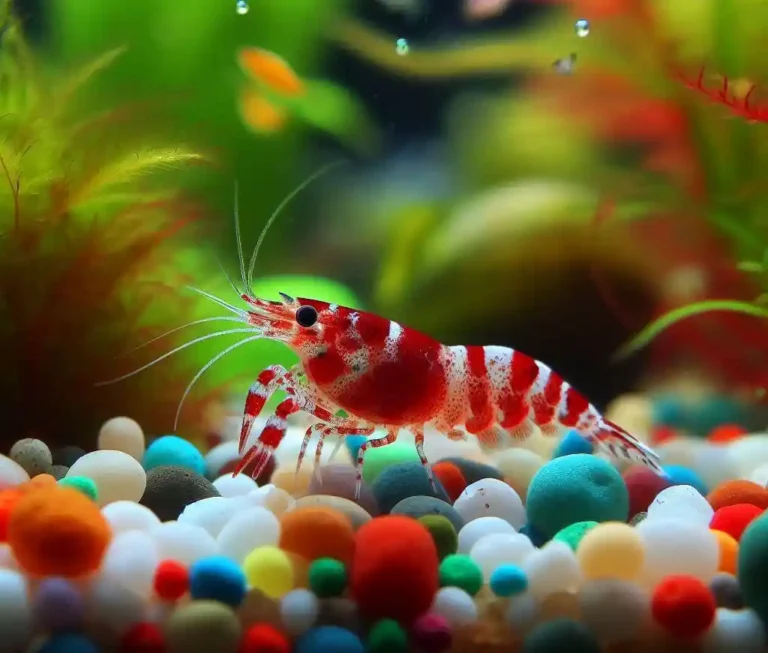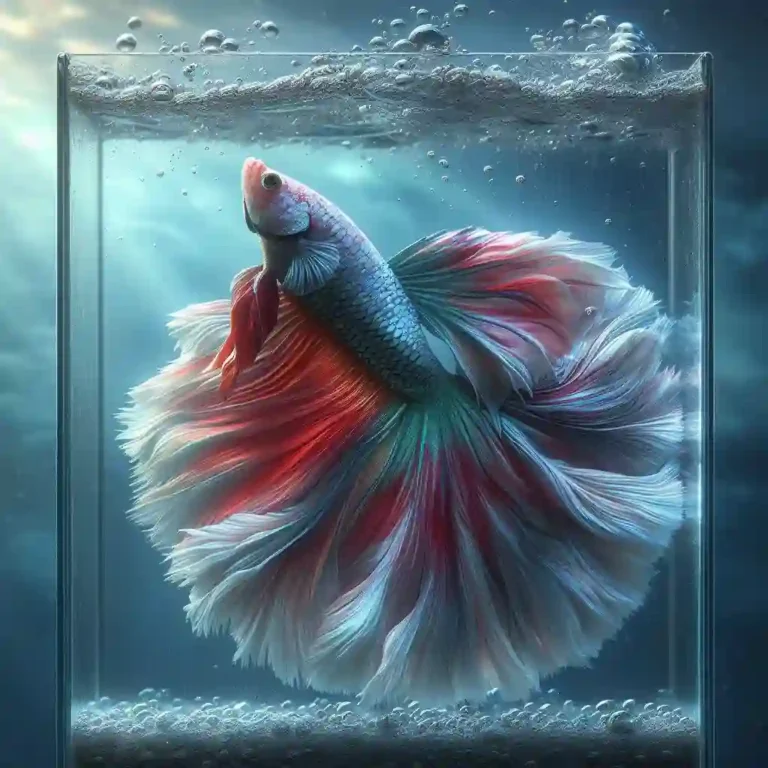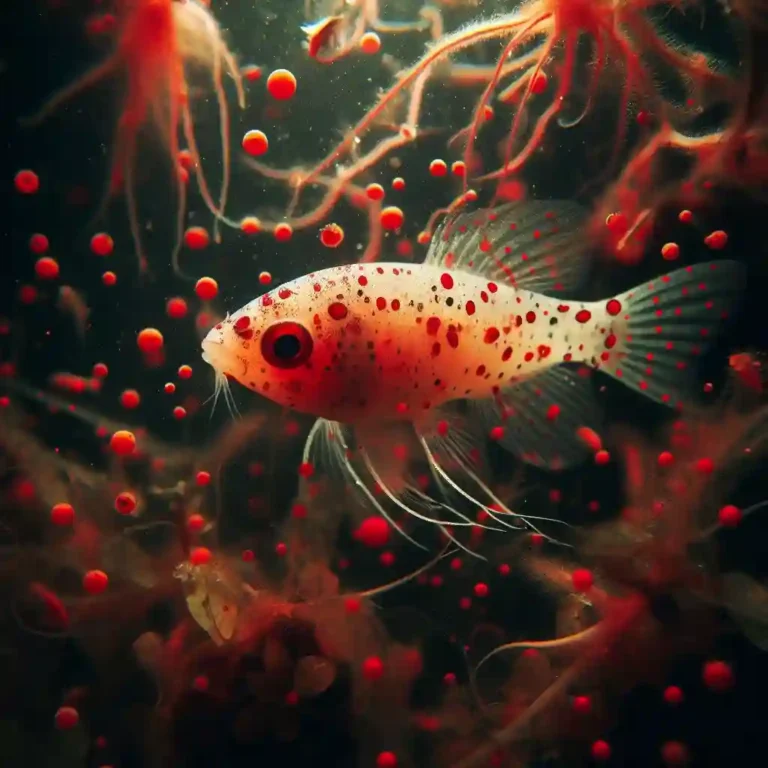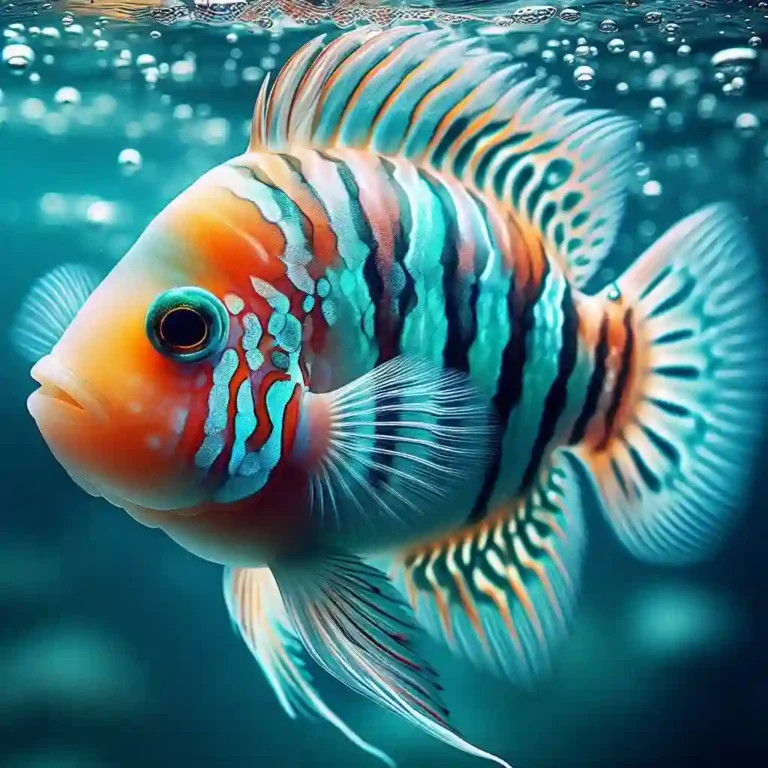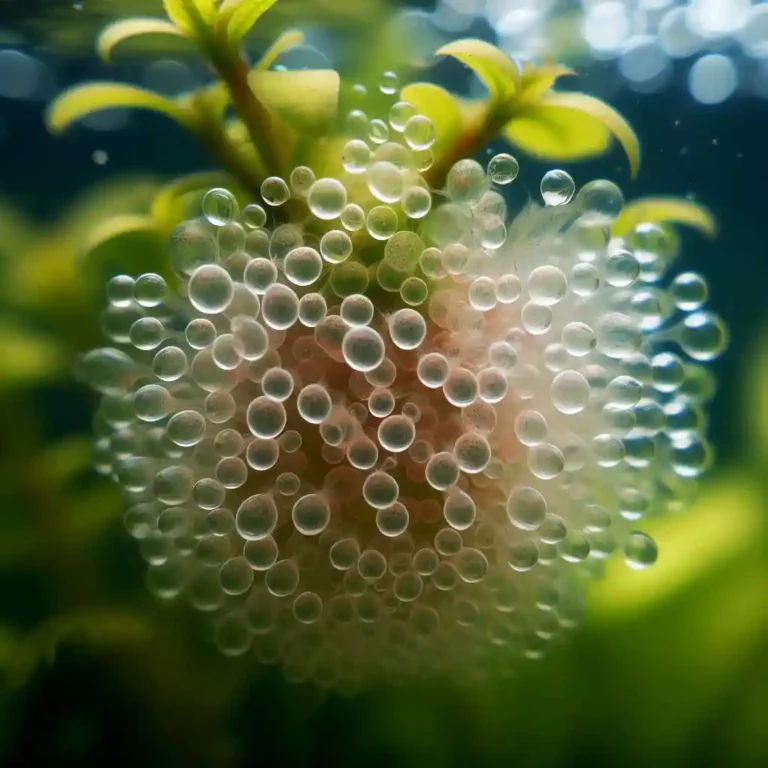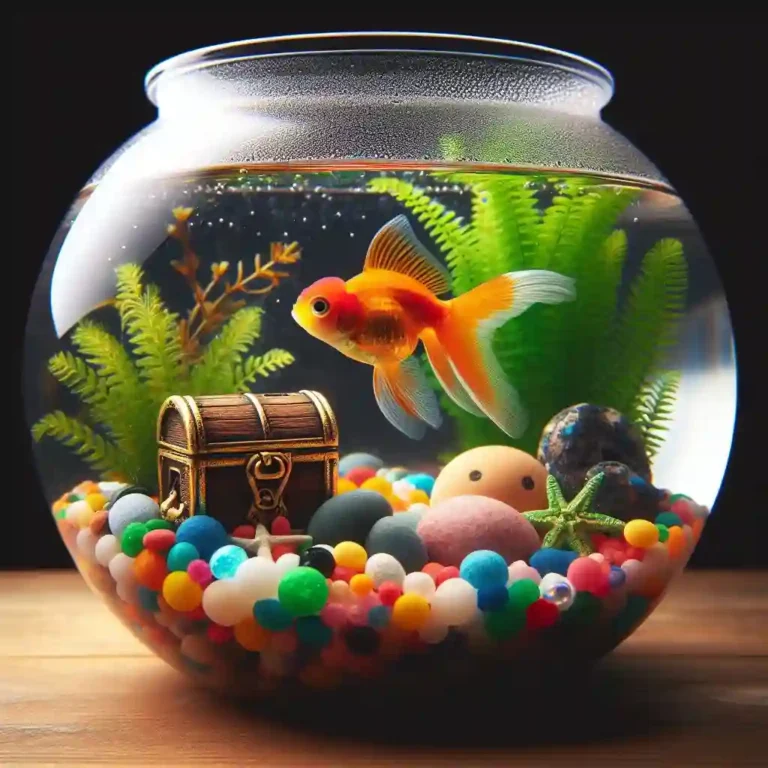Black Spots on Goldfish: A Guide to Diagnosis and Treatment
Black Spots on Goldfish: One common concern for many goldfish enthusiasts is the appearance of black spots on their fish.
These unsightly patches can be a sign of a underlying issue, and if left untreated, can lead to more serious health problems.
In this article, we’ll delve into the world of black spots on goldfish, exploring the causes, symptoms, and treatment options for this common condition.
Black Spots on Goldfish: A Quick Guide

What are black spots on goldfish?
Black spots on goldfish are small, dark patches that appear on the fish’s skin or scales.
What causes black spots on goldfish?
Black spots on goldfish can be caused by a variety of factors, including:
- Poor water quality
- Nutritional deficiencies
- Parasites
- Infections
- Genetic predisposition
What are the symptoms of black spots on goldfish?
Symptoms of black spots on goldfish may include:
- Small, dark patches on the skin or scales
- Faded or dull coloration
- Lethargy or lethargic behavior
- Poor appetite or weight loss
- Slow growth or stunted growth
How are black spots on goldfish treated?
Treatment for black spots on goldfish will depend on the underlying cause of the condition. In some cases, medication may be necessary to treat infections or parasites. In other cases, dietary changes or aquarium maintenance may be sufficient to resolve the issue.
How can I prevent black spots on my goldfish?
To prevent black spots on your goldfish, make sure to:
- Maintain good aquarium water quality
- Provide a balanced diet
- Monitor your fish’s health regularly
- Avoid overcrowding the aquarium
- Quarantine new fish before introducing them to the main aquarium
What Are Black Spots on Goldfish?
Black spots on goldfish are small, dark patches that appear on the fish’s scales, fins, or body. They can be small and isolated or large and widespread, covering a significant portion of the fish’s body.
In some cases, the black spots may be accompanied by other symptoms such as labored breathing, lethargy, or loss of appetite.
Black spots can appear on goldfish of all ages and breeds, although they are more common in certain varieties such as Veiltails and Orandas. The spots themselves are usually harmless, but they can be a sign of an underlying issue that needs to be addressed.
Common Causes of Black Spots on Goldfish
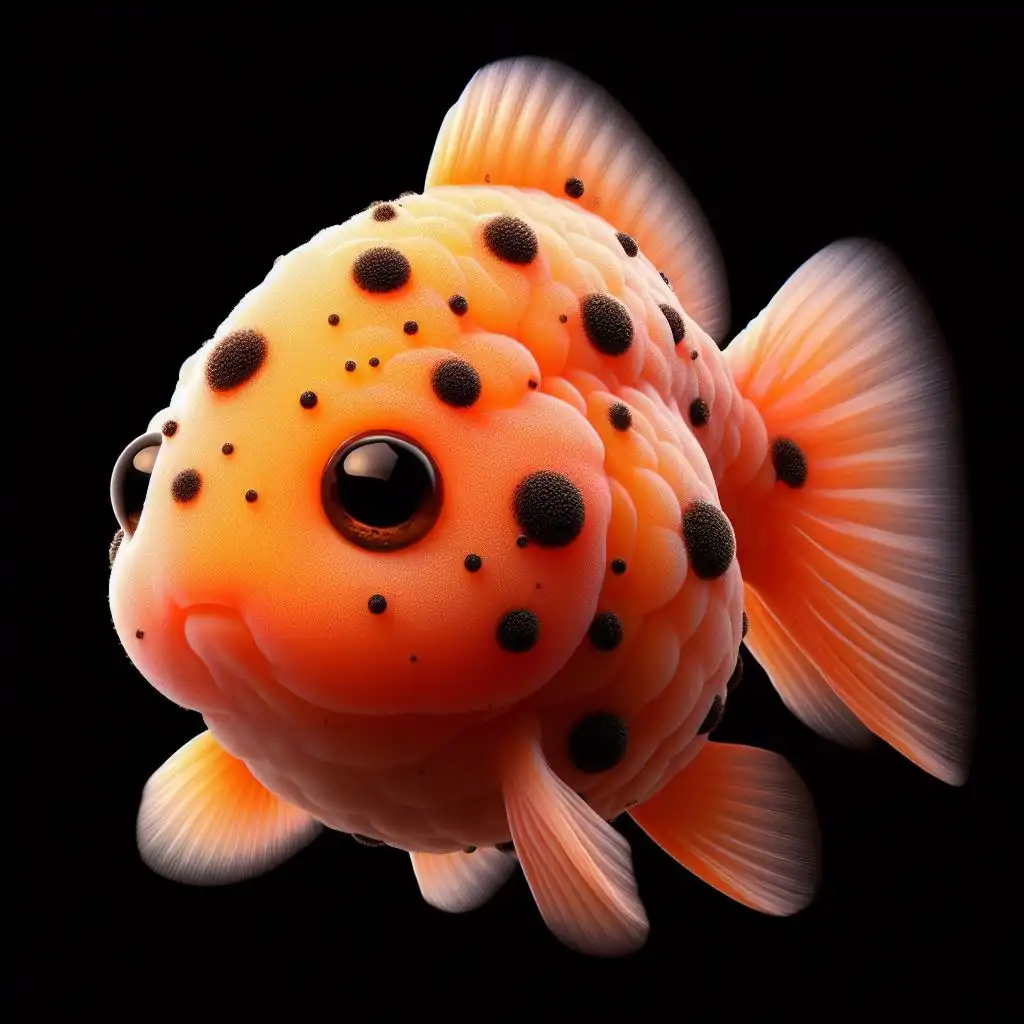
Black spots on goldfish can be caused by a variety of factors, including:
- Parasitic Infections: Parasites such as ich, velvet, and flukes can cause black spots to appear on your goldfish. These parasites attach themselves to the fish’s body and feed on its skin and scales, causing irritation and inflammation.
- Bacterial Infections: Bacterial infections can also cause black spots to appear on goldfish. Bacteria such as Aeromonas and Pseudomonas can infect the fish’s skin and scales, leading to the formation of black spots.
- Fungal Infections: Fungal infections, such as those caused by Saprolegnia, can also cause black spots on goldfish. Fungal infections often occur in fish that are stressed or have weakened immune systems.
- Nutritional Deficiencies: A diet that is deficient in essential nutrients can cause black spots to appear on goldfish. For example, a lack of vitamin C can cause skin problems, including black spots.
- Poor Water Quality: Poor water quality can also cause black spots on goldfish. Ammonia, nitrite, and nitrate buildup can irritate the fish’s skin and scales, leading to the formation of black spots.
- Genetic Predisposition: Some goldfish breeds, such as Veiltails and Orandas, are more prone to developing black spots due to their genetic makeup.
- Injury or Trauma: Physical injury or trauma can cause black spots to appear on goldfish. For example, if a fish is injured during a fight or while swimming into a decoration, it may develop a black spot at the site of the injury.
- Age-Related Changes: As goldfish age, they may develop black spots as a natural part of the aging process.
Symptoms of Black Spots on Goldfish: What to Look Out For
If your goldfish has developed black spots, there may be other symptoms that accompany this condition. Here are some common symptoms to look out for:
- Appearance of Black Spots: The most obvious symptom of black spots on goldfish is the appearance of small, dark patches on the fish’s scales, fins, or body.
- Labored Breathing: If your goldfish is having trouble breathing, it may be a sign that the black spots are caused by a parasitic or bacterial infection.
- Lethargy: If your goldfish is lethargic or inactive, it may be a sign that the black spots are causing discomfort or pain.
- Loss of Appetite: A decrease in appetite or refusal to eat can be a sign that your goldfish is stressed or uncomfortable due to the black spots.
- Fins Clamped or Tucked In:If your goldfish is holding its fins clamped or tucked in, it may be a sign of discomfort or pain caused by the black spots.
- Rapid Breathing or Gulping: Rapid breathing or gulping can be a sign of respiratory distress, which may be related to the black spots.
- Erratic Swimming: If your goldfish is swimming erratically or darting back and forth, it may be a sign of stress or discomfort caused by the black spots.
- Changes in Color or Fins: If your goldfish’s color is dull or faded, or if its fins are torn or damaged, it may be a sign of a underlying issue related to the black spots.
- Weight Loss: If your goldfish is losing weight or appears thin, it may be a sign that the black spots are causing a nutritional deficiency or other underlying issue.
- Secondary Infections: If the black spots are caused by a bacterial or fungal infection, there may be secondary infections or complications that arise, such as fin rot or tail rot.
The Role of Water Quality in Black Spot Development
Water quality plays a crucial role in the development of black spots on goldfish. Poor water quality can contribute to the formation of black spots in several ways:
- Ammonia and Nitrite Buildup: Ammonia and nitrite are toxic compounds that can build up in the aquarium water if it’s not properly cycled or maintained. These toxins can irritate the fish’s skin and scales, leading to the formation of black spots.
- Nitrate Buildup: Nitrate buildup can also contribute to the development of black spots. High levels of nitrate can cause stress to the fish, making them more susceptible to disease and infection.
- pH Imbalance: A pH imbalance can cause stress to the fish, making them more prone to disease and infection. If the pH is too high or too low, it can cause irritation to the fish’s skin and scales, leading to the formation of black spots.
- Lack of Oxygen: Insufficient oxygen levels in the water can cause stress to the fish, leading to the formation of black spots.
- Presence of Heavy Metals: Heavy metals such as copper, lead, and mercury can be toxic to goldfish and can contribute to the development of black spots.
- Bacterial and Fungal Growth: Poor water quality can lead to the growth of bacteria and fungi, which can infect the fish and cause black spots to form.
- Water Temperature Fluctuations: Fluctuations in water temperature can cause stress to the fish, making them more susceptible to disease and infection.
Parasites and Infections: A Common Cause of Black Spots
Parasites and infections are a common cause of black spots on goldfish. Here are some of the most common parasites and infections that can cause black spots:
- Ich (White Spot Disease): Ich is a common parasitic infection that can cause black spots on goldfish. It’s caused by the parasite Ichthyophthirius multifiliis and can be treated with medication.
- Flukes: Flukes are a type of parasitic worm that can infect goldfish and cause black spots. They can be treated with medication and good aquarium maintenance.
- Anchor Worms: Anchor worms are a type of parasitic worm that can infect goldfish and cause black spots. They can be treated with medication and good aquarium maintenance.
- Bacterial Infections: Bacterial infections can cause black spots on goldfish. They can be caused by bacteria such as Aeromonas and Pseudomonas.
- Fungal Infections: Fungal infections can also cause black spots on goldfish. They can be caused by fungi such as Saprolegnia.
Symptoms of Parasitic and Infectious Black Spots
If your goldfish has black spots caused by parasites or infections, you may notice the following symptoms:
- Labored breathing
- Lethargy
- Loss of appetite
- Fins clamped or tucked in
- Rapid breathing or gulping
- Erratic swimming
- Changes in color or fins
- Weight loss
Treatment of Parasitic and Infectious Black Spots
If you suspect that your goldfish has black spots caused by parasites or infections, you should:
- Quarantine the affected fish
- Treat the fish with medication
- Improve aquarium maintenance and water quality
- Monitor the fish for signs of improvement
Nutritional Deficiencies and Black Spots on Goldfish
Nutritional deficiencies can also cause black spots on goldfish. A diet that is lacking in essential nutrients can lead to a range of health problems, including black spots. Here are some common nutritional deficiencies that can cause black spots on goldfish:
- Vitamin C Deficiency: A deficiency in vitamin C can cause black spots on goldfish. Vitamin C is essential for the production of collagen, which is necessary for healthy skin and scales.
- Vitamin E Deficiency: A deficiency in vitamin E can also cause black spots on goldfish. Vitamin E is an antioxidant that helps to protect the fish’s skin and scales from damage.
- Omega-3 Deficiency: A deficiency in omega-3 fatty acids can cause black spots on goldfish. Omega-3 fatty acids are essential for healthy skin and scales.
- Protein Deficiency: A deficiency in protein can cause black spots on goldfish. Protein is essential for the growth and repair of skin and scales.
- Mineral Deficiency: A deficiency in essential minerals such as calcium, phosphorus, and zinc can cause black spots on goldfish. These minerals are necessary for healthy bone growth and development.
Symptoms of Nutritional Deficiencies
If your goldfish has black spots caused by nutritional deficiencies, you may notice the following symptoms:
- Black spots or patches on the skin or scales
- Faded or dull coloration
- Lethargy or lethargic behavior
- Poor appetite or weight loss
- Slow growth or stunted growth
Treatment of Nutritional Deficiencies
If you suspect that your goldfish has black spots caused by nutritional deficiencies, you should:
- Provide a balanced and varied diet that includes a range of nutrient-rich foods
- Supplement the diet with vitamin and mineral supplements
- Ensure that the aquarium water is clean and well-maintained
- Monitor the fish for signs of improvement
Treatment Options for Black Spots on Goldfish
If your goldfish has black spots, there are several treatment options available to help alleviate the condition. The most effective treatment will depend on the underlying cause of the black spots. Here are some common treatment options:
- Medication: Medications such as antibiotics, antifungals, and antiparasitics can be used to treat bacterial, fungal, and parasitic infections that cause black spots.
- Water Changes: Regular water changes can help to remove toxins and waste products from the aquarium water, which can help to alleviate black spots caused by poor water quality.
- Diet Changes: Changing the diet of your goldfish to a more balanced and nutrient-rich diet can help to alleviate black spots caused by nutritional deficiencies.
- Supplements: Adding supplements to the aquarium water can help to provide essential nutrients and vitamins that may be lacking in the diet.
- Aquarium Maintenance: Regular aquarium maintenance, including cleaning the gravel and decorations, can help to reduce stress and prevent black spots caused by poor water quality.
- Quarantine: Quarantining the affected fish can help to prevent the spread of disease and infection to other fish in the aquarium.
- Surgery: In some cases, surgery may be necessary to remove infected tissue or to repair damaged skin and scales.
- Antibiotics: Antibiotics can be used to treat bacterial infections that cause black spots.
- Antifungals: Antifungals can be used to treat fungal infections that cause black spots.
- Antiparasitics: Antiparasitics can be used to treat parasitic infections that cause black spots.
Tips for Preventing Black Spots on Goldfish
Here are some tips to help prevent black spots on your goldfish:
- Maintain Good Aquarium Water Quality
- Regularly test the water for ammonia, nitrite, and nitrate levels
- Perform partial water changes to maintain good water quality
- Provide a Balanced Diet
- Feed your goldfish a balanced and varied diet that includes a mix of vegetables, fruits, and proteins
- Monitor Your Fish’s Health
- Regularly monitor your goldfish’s health and behavior to catch any signs of illness or stress early on
- Keep Your Aquarium Clean
- Regularly clean the aquarium and its decorations to prevent the buildup of bacteria and other microorganisms
- Avoid Overcrowding
- Avoid overcrowding the aquarium, as this can lead to stress and increase the risk of disease
- Provide Adequate Space
- Provide your goldfish with adequate space to swim and move around in the aquarium
- Avoid Stress
- Avoid stressing your goldfish by handling them excessively or exposing them to sudden changes in temperature or water chemistry
- Quarantine New Fish
- Quarantine new fish for at least 2 weeks before introducing them to the main aquarium to prevent the spread of disease
- Monitor Water Temperature
- Monitor the water temperature and avoid sudden changes that can cause stress to your goldfish
- Provide Hiding Places
- Provide your goldfish with hiding places and plants to reduce stress and provide a sense of security
FAQs
Q: What causes black spots on goldfish?
A: Black spots on goldfish can be caused by a variety of factors, including poor water quality, nutritional deficiencies, parasites, and infections.
Q: How can I prevent black spots on my goldfish?
A: To prevent black spots on your goldfish, make sure to maintain good aquarium water quality, provide a balanced diet, and monitor your fish’s health regularly.
Q: How can I treat black spots on my goldfish?
A: Treatment for black spots on goldfish will depend on the underlying cause of the condition. In some cases, medication may be necessary to treat infections or parasites. In other cases, dietary changes or aquarium maintenance may be sufficient to resolve the issue.
Q: Can black spots on goldfish be contagious?
A: Yes, black spots on goldfish can be contagious. If one fish in an aquarium develops black spots, it can spread to other fish in the tank.
Q: Can black spots on goldfish be cured?
A: In some cases, black spots on goldfish can be cured with proper treatment. However, in other cases, the condition may be chronic and require ongoing management to prevent recurrence.
Q: How can I prevent black spots on my goldfish from spreading to other fish in the aquarium?
A: To prevent black spots on your goldfish from spreading to other fish in the aquarium, make sure to quarantine any affected fish and maintain good aquarium water quality.
Q: Can black spots on goldfish be prevented?
A: Yes, black spots on goldfish can be prevented by maintaining good aquarium water quality, providing a balanced diet, and monitoring your fish’s health regularly.
Q: How can I tell if my goldfish has black spots?
A: Black spots on goldfish can appear as small, dark patches on the fish’s skin or scales. They may be difficult to see, so it’s important to inspect your fish regularly to catch any signs of illness early on.
Q: Can black spots on goldfish be treated at home?
A: In some cases, black spots on goldfish can be treated at home with over-the-counter medications or dietary changes. However, in other cases, professional treatment from a veterinarian or experienced aquarist may be necessary.

Hello, I’m Aria Cooper, the heart and soul behind Swimmy Buddies. As a devoted fish aficionado, I share my aquatic adventures and expertise to inspire your own underwater explorations. 🐠🌊

